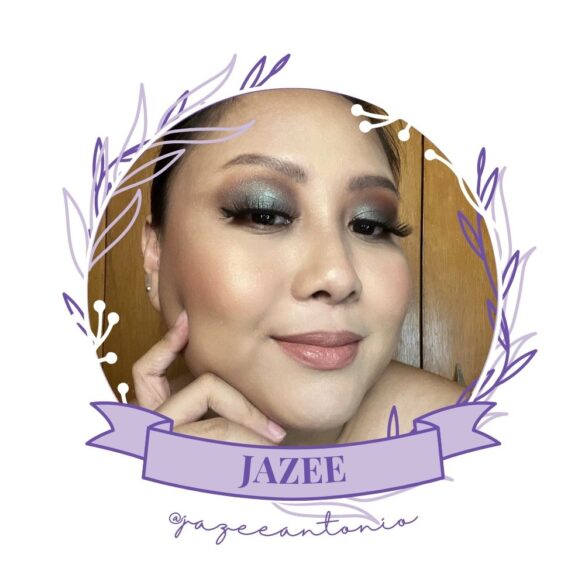![[BLOG] My 2nd Baby Had Cradle Cap (Seborrheic Dermatitis in Infants) with photos](https://i0.wp.com/www.bebejaz.com/wp-content/uploads/2020/05/cradle-cap-seborrheic-dermatitis-infant-baby.jpg?resize=845%2C550&ssl=1)
[BLOG] My 2nd Baby Had Cradle Cap (Seborrheic Dermatitis in Infants) with photos
My experience with my second child with cradle cap and seborrheic dermatitis…
1 week after birth, tiny bumps started to show up on my daughter’s forehead and eyebrows. At first, I thought nothing of it because it is so small until it started to get worse. It spread on her cheeks and scalp. This is not new to me (handling baby skin condition) because my eldest also had a skin issue when she was an infant (read about it here) but this is different type of eczema because her elder sister had atopic dermatitis while Jackie has seborrheic dermatitis based on the presence of scaly patches with yellow, greasy crusts.
Here are photos from August 2019 when I noticed the tiny bumps and scaly/flaky skin on Jackie’s forehead.



















On cleaning the scalp, I put an ample amount of baby oil on the affected area of her scalp and let it soak for about 10-15 minutes. I also massaged the scalp so that the oil penetrates the dry yellowish scales much better (Tip: When you do this, prepare tissues to wipe off yellow greasy scales from your hand). Then, I gently removed the scales using a fine comb like the one shown in the photo below. At some point, I used Magic Suyod and it worked great (Note: Please handle with care if you will follow suit).


After her 1st month, red bumps still show mostly on her face and neck then sparsely scattered on the rest of the body. I make sure to check her face if there is any yellowish and greasy oil buildup in the ear area, face and neck. I wipe them with cotton balls to control the oil buildup.



Below is a slideshow of photos from September to October 2019 showing progress and sudden flare-up of the reddish rashes on her face:
After her 2nd month, I think all became better for her skin.

I hope this helps some of you mommies in dealing with cradle cap/seborrheic dermatitis. I have added some general info for your reference below because as you know I am just a mommy like you. It is still best to check with a licensed pediatrician or pediatric dermatologist for advice on your baby’s health and skin condition.
Blow are some general information I got from Google Search (sources listed after the articles).
What Is Cradle Cap?
Cradle cap is the common term for seborrheic dermatitis (seb-eh-REE-ik dur-muh-TYE-tis) of the scalp in infants.
Seborrheic dermatitis, also called seborrhea (seb-eh-REE-uh), can show up:
- on the forehead and face
- behind the ears
- in the diaper area, armpits, and other skin folds and creases
Seborrheic dermatitis in children, known as cradle cap in infants, occurs where there are many oil-producing glands, and usually requires simple treatment. It is a skin condition that causes white-to-yellow greasy scales to form on the scalp, ears, and face.
What Are the Signs & Symptoms of Cradle Cap (Seborrheic Dermatitis)?
Babies can develop seborrheic dermatitis when they’re between 2 weeks and 12 months old. It usually starts with cradle cap. A baby with cradle cap will have slightly red scaly or crusty yellow patches on the scalp. It may also start on the face or diaper area and spread to other parts of the body.
Seborrhea looks:
- red and moist in skin creases and folds (like the neck and behind the ears)
- yellowish with greasy patches or crusts
- scaly or flaky
Seborrheic dermatitis might look uncomfortable or irritating to the skin. But it usually isn’t itchy and doesn’t seem to bother infants.
What Causes Cradle Cap (Seborrheic Dermatitis)?
The exact cause of cradle cap is still unknown. It’s likely due to a combination of things. It may run in families. One cause may be hormones. Too much skin oil (sebum) in the oil glands and hair follicles and a type of yeast found on the skin called Malassezia may play roles in the development of seborrheic dermatitis. Malassezia is present on the skin in small numbers. Sometimes the numbers increase and lead to skin problems.

Photo from PIXNIO.
How Is Cradle Cap (Seborrheic Dermatitis) Treated?
Cradle cap and seborrheic dermatitis in infants usually clears up on its own in weeks or months. In the meantime, you may want to loosen and remove the scales on your baby’s scalp:
- Wash your baby’s hair once a day with mild, tear-free baby shampoo.
- Gently remove scales with a soft brush or toothbrush.
- If the scales don’t loosen easily, apply a small amount of mineral oil or petroleum jelly to your baby’s scalp. Let the oil to soak into the scales for a few minutes to several hours, if needed. Then use a soft brush or toothbrush to remove scales. Shampoo your baby’s hair as usual.
If regular shampooing doesn’t help, your doctor may recommend a mild steroid cream or antifungal shampoo.
For seborrhea on other parts of the body, your doctor may recommend a mild steroid or antifungal cream.
Do not use over-the-counter steroid or antifungal creams or anti-seborrhea shampoos without checking first with the doctor.
What Else Should I Know?
Sometimes seborrheic dermatitis in the diaper area or skin folds can get infected. Talk to your doctor if the rash gets worse or there are any signs of infection (the skin looks red, starts to drain fluid, or feels warm).
Cradle cap and seborrheic dermatitis in infants usually get better by 12 months of age. Seborrhea may come back around puberty as dandruff.
Sources:
https://kidshealth.org/en/parents/cradle-cap.html
https://familydoctor.org/condition/seborrheic-dermatitis/



























